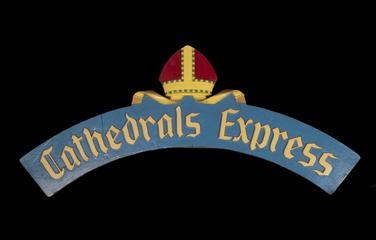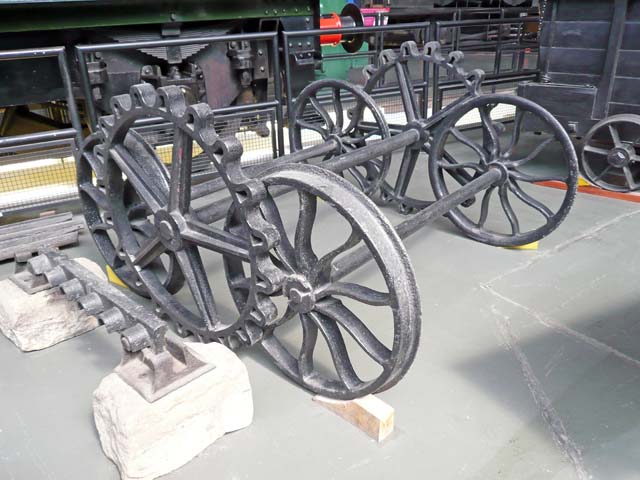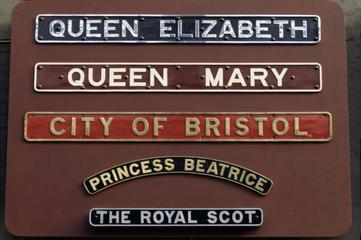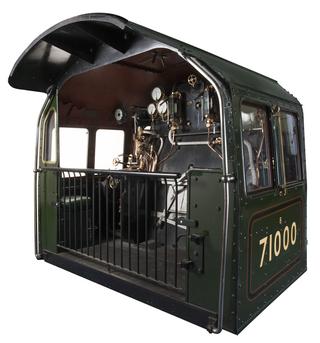
Set of wheels from Blenkinsop Railway locomotive
- Made:
- 1880

Set of wheels, cast from original patterns for Blenkinsop Railway locomotive, 1 fluted set, 2 flanged sets, painted black and set on rails; overall dimensions: 1800 mm x 2000 mm (see note below)
In the early nineteenth century many engineers questioned the ability of steam locomotives with smooth metal wheels to gain sufficient traction or grip to pull loaded wagons along smooth metal rails. There was a danger that heavier locomotives, ore able to grip, would break the cast iron rail. One answer to both problems was to design a lighter locomotive which gripped using rack rail.
In 1812 John Blenkinsop and Matthew Murray introduced the first commercially successful steam locomotives running on special rack rails, to haul coal from the Middleton colliery to Leeds. Although the axles displayed here illustrate the Blenkinsop principle and may be contemporary, they are unusual in being geared on both sides – Blenkinsop’s locomotives were known to be geared only on one side.
Details
- Category:
- Locomotives and Rolling Stock Components
- Object Number:
- 1975-7143
- Materials:
- metal (unknown)
- Measurements:
-
overall: 1800 mm x 2000 mm,
- type:
- wheels
- credit:
- British Rail, Historical Relics


